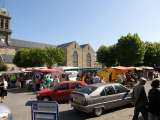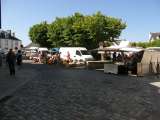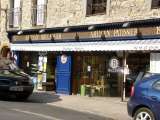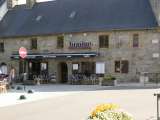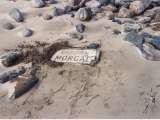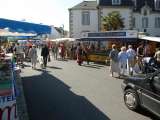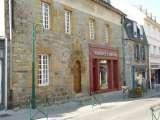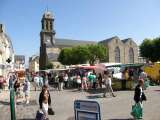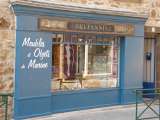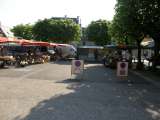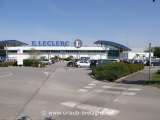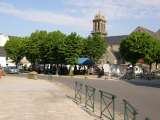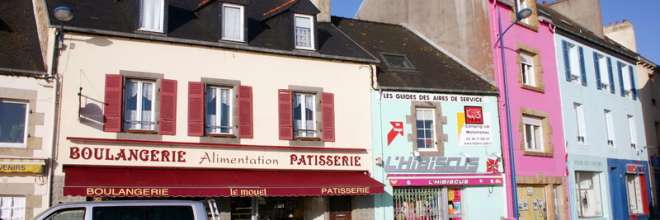
Villages & Towns
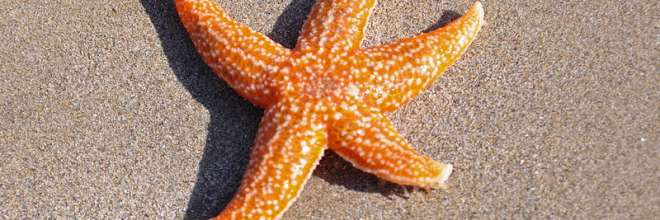
Beaches & Recreation
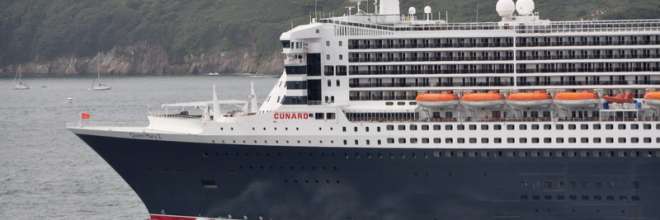
Tips & Info
Holiday destinations of Brittany
Brittany, which is located in north-western France and whose capital is Rennes, is particularly recommended for a special holiday in France. The region consists of 4 départements, all of which are worth a visit. Ille-et-Vilaine, Côtes d'Armor, Finistère and Morbihan.
Ille-et-Vilaine, named after the Ille and Vilaine rivers, is located in the north of Brittany together with Côtes d'Armor and North Finistère, South Finistère and Morbihan in South Brittany.
The coasts of Brittany are particularly popular, they are one of the largest and most diverse coastal areas in Europe and the largest in France, a protected natural and recreational area of fascinating variety of landscapes. Each stretch of coast enchants with a wonderful interplay of colors of the sea, the rocks and the diverse fauna. The sea is never the same, sometimes emerald green, azure blue, then dark gray to black, sometimes it is calm and gentle, then wildly thundering.
Les côtes bretonnes, Brittany's coastal landscape, includes the Emerald Coast (la côte d'Emeraude), the Coelo Coast (la côte Goëlo), the Pink Granite Coast (la côte granit rose), the Coast of Legends (la côte des legends), the Iroise Coast (la mer d 'Iroise), the Cornouaille Coast (la côte de Cornouaille), the Magalith Coast (la côte des Mégalithes)
In front of the coast of Brittany you will find a variety of fishing grounds and from here you will also find the sought after scallops, various oysters and other seafood.
One of the largest hiking trails in France, the BR34, former customs officers' trail and 1,300 km long, runs along the shores past cliffs and bizarre rock landscapes, numerous offshore islands, secluded picturesque bays, beautiful dune landscapes and estuaries A paradise for a walking holiday in Brittany.
The famous lighthouses of Brittany can be discovered on the coast of Saint Nazaire in the Loire-Atlantique to the bay of the legendary Mont St Michel on the border with Normandy.
But the interior of Brittany is beautiful and varied. Silent lakes mystical forests with wild streams, historical treasures and legends such. the mysterious Fôret de Brocéliande (Fôret de Paimpont), scene of the Arthurian saga.
Here you walk in the footsteps of Viviane, King Arthur and the magician Merlin.
Or the famous forest of Huelgoat, located in the Armorika Natural Park, with a sea of mossy stones and rocks and its monuments, Roche Tremblante, Le Champignon, Le Ménage de la Vierge, La Grotte du Diable, le Gouffre with its beautiful waterfall , la Grotte d'Arthus, Le Moulin du Chaos, Le Camp d'Arthus.
West of Huelgoat rises the highest punk of Brittany, a "mountain", the Monts d'Arree, surrounded by wild moorland and a magnificent heath landscape. This area is considered the last Place virgin country of Brittany.
In every part of the interior you will find culture and tradition, starting with the megalithic menhirs and dolmens to medieval castles, chapels, churches and castles. Even whole medieval towns can be visited, such as Rochefort en Terre.
Whether you want a beach holiday, an active holiday, a tour or a city break in France, Brittany is a dream holiday destination.
Finistère
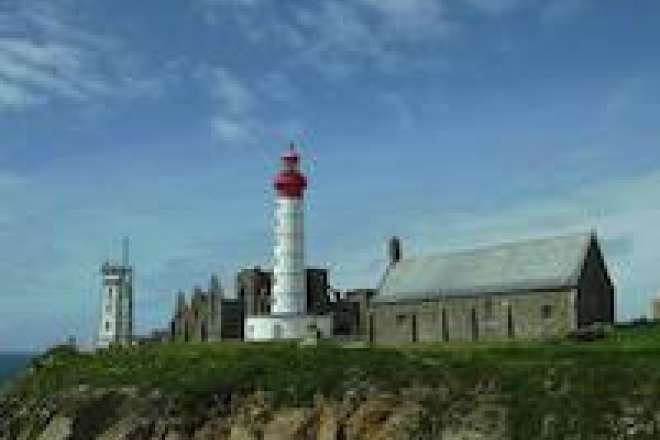
The department of Finistère (Latin for "the end of the world", Breton "Penn ar Bed") is located in northwestern France. It extends from Morlaix via the port city of Brest to the town of Quimpelé. The Finistère is bordered to the north by the English Channel, to the west by the Mer d'Iroise and to the south by the Atlantic Ocean
The main prefecture is located in the historic city of Quimper, the sub-prefectures in Morlaix, Chateaulin and Brest.
Many tourists come to Finistère for its 1,200 km of beautiful coastline, with its varied long beaches and coves, natural and cultural diversity, coastal towns and picturesque harbors that offer interesting and historic sights.
In the North Finistère there are 23 lighthouses, including the highest lighthouse in Europe, the Phare des l'Ile Vierge with 397 steps and 82.50 m height. It is worth the "Route des Phares" to follow the road of the lighthouses between Plougonvelin, north of Brest to the Pays des Abers.
Finistère is also the land of legends. The belief in the supernatural, the secrets, the stories of ancient times still characterize life here.
Gorgeous also islands of Finistère, which are the most beautiful of Brittany:
Ile de Batz, who lies in front of Roscoff
Ile Ouessant, the westernmost wild island
Ile de Sein, opposite the Pointe du Raz
Ile Vierge at Aber-Wrac'h
Ile Callot at Carantec
Ile Molène between Ouessant and the rade de Brest
Ile Tristan at Douarnenez
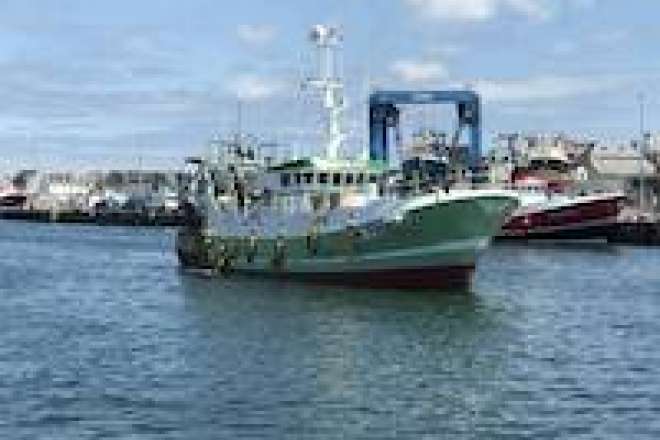
The most famous places of Finistère:
The port city of Brest, where the largest French naval base was built in the 17th century. Unfortunately, the historic city center was destroyed here in World War II. Brest is today a rather sober modern university town and has the second largest naval base in France.
Brest is after Rennes the second largest city in Brittany, prefecture seat and cultural metropolis of North Finistère.
Sights: The Oceanopolis, a large saltwater aquarium that presents the local marine world and the Château de Brest, the fortress.
Brest is a lively city, popular with young people in particular, there are numerous events, a cultural center "le Quartz", the harbor festival held every 4 years in July, where the largest sailors from all over the world arrive.
The Crozon peninsula, also known as Brittany en miniature, as it combines everything that makes up Brittany, is a scenic gem; It lies between the wheel of Brest and the bay of Douarnenez and offers everything your heart desires, long sandy beaches, small secluded bays, high cliffs, dune and heath landscapes, forests; in the interior, bogs and swamps form a special biotope.
Locronan (Place of the Ronan), 15 km north of Quimper, a town of centuries old granite and slate buildings, has remained completely authentic. Many films were filmed here, such as B. Tess by Roman Polanski.
The history of this town goes back to the 5th century BC when Celtic tribes still lived here.
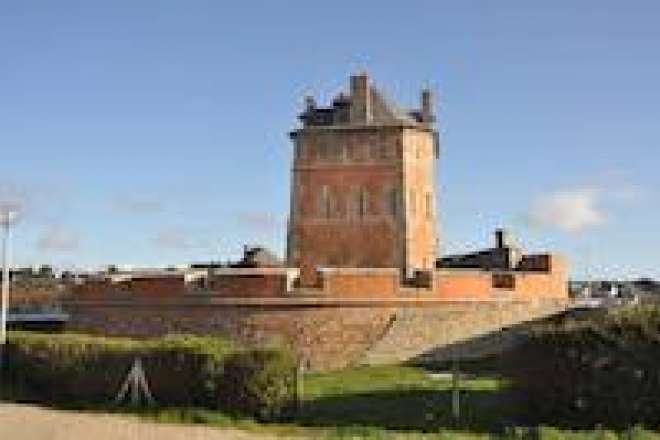
Quimper, the capital of art and legends and one of the seven episcopal cities of Brittany, former capital of Cornouaille. At the center is the cathedral Saint-Corentin, whose construction lasted 3 centuries, it is one of the most beautiful buildings of Gothic art.
The old town is gorgeous. Old half-timbered houses in small streets, the bridges over the river Odet, which lead into the green surroundings.
The Musée des Beaux Arts is one of the richest in France. Here you will find works by Boudin, by Max Jacob, by Tal-Coat.
You can marvel at the regional art heritage in the old Bishop's Palace in the Breton Heritage Museum.
Quimper is also known for his porcelain art (Faïence)
Concarneau in southern Finistère, surrounded by medieval walls. The old town is located in the middle of the sea, connected to the mainland by 2 bridges. The fortified city is one of the most visited in Brittany. Life in the harbor is shaped by the approximately 200 fishing boats. The marina is a popular place for water sports activities. Around Concarneau you will find fine sandy beaches for bathing pleasure.
Pont Aven, the City of Painters, located on the Aven River, famous for the artists Gauguin, Seguin, Bernard and Sérusier. It is a small town with many mills and a nearby forest with romantic light plays.
Glénan archipelago, seven islands with beautiful white sand beaches in the midst of a crystal-clear inland sea off the coast of Concarneau.
Ille-et-Vilaine
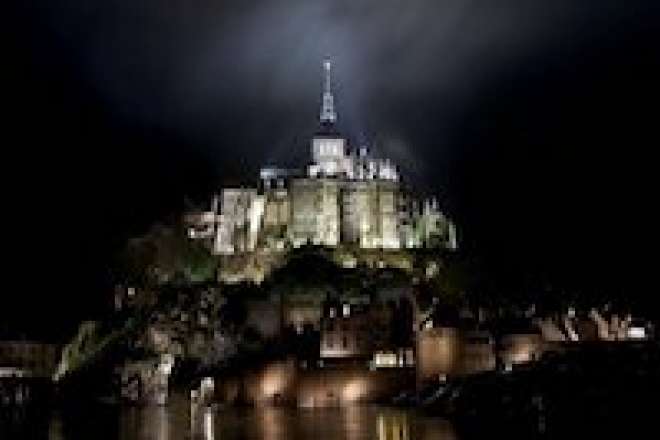
The département Ile-et-Vilaine is located in north-western France and is named after the rivers Ille and Vilaine, whose runs meet in the capital Rennes.
Rennes is a beautiful city with many attractions, dating back to different architectural periods.
The city wall is from the 3rd century, many half-timbered houses were built in the Middle Ages. The old town is a feast for the eyes, the town hall, the cathedral Saint-Pierre, the opera house and the museum building "Les Champs Libres".
Rennes is a lively student city with many cafes, bars and restaurants, art lovers will get their money, many museums attract many tourists every year. The "Les Champs Libres" houses the official Museum of Brittany. Regional and international art from different eras can be seen in the "Musée des Beaux-Arts", in the "Ecomusée du pays de Rennes" you can marvel at the past life in rural Brittany, and the "Espace des Sciences" is especially for children interesting, here you go on a scientific journey of discovery.
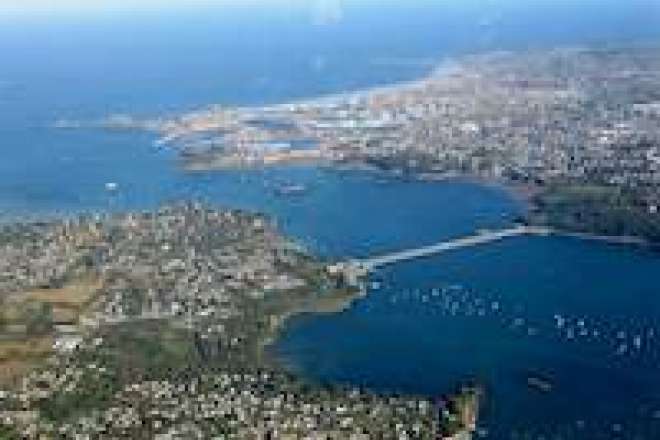
Ille-et-Vilaine has the least length of coastline, but Mont Saint Michel is one of France's most famous sights.
Saint Malo, a beautiful port city founded over 2,000 years ago with the famous 10-meter-wide city wall, from which you have a magnificent view of the Atlantic Ocean. Especially beautiful here is the "Grand Aquarium", which impressively shows the underwater world of the Breton coast.
In Saint Malo you can admire one of the largest tidal differences in Europe, where the difference between low tide and high tide is 12 meters, at low tide you can reach the offshore islands Petit Bé and Grand Bé by foot.
Cancale, overlooking the famous Mont Saint-Michel, is famous for its oysters and other shellfish. In Cancale harbor, there are numerous restaurants, a paradise for gourmets. Not for nothing is the city referred to as the "site remarquable du goût". Even the Romans ate oysters here!
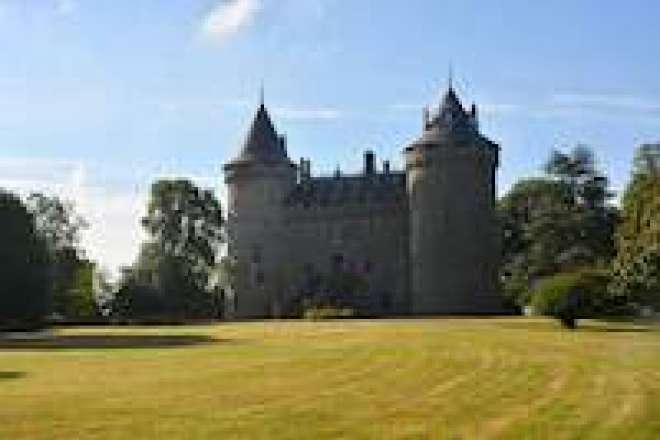
Fougères, with its imposing fortress and medieval charm, once on the border between Brittany and France, which was independent in the Middle Ages, was once a showcase of Breton trading venues. The medieval castle, which was built in 1020, the many beautiful half-timbered houses still remember the rich past of the city.
A visit is also worth the numerous picturesque gardens and parks, a sea of colors of camellias, azaleas and rhododendrons
Dinard, the famous seaside resort on the Emerald Coast, a seaside resort for the rich, also called "Nice of the North". Noble Art Nouveau villas line the beach. The infrastructure here offers an international audience the ideal setting with golf facilities, tennis courts and casino.
Along the Zöllnerpfad, along the sea, you reach the smaller and quieter seaside resorts of Saint-Lunaire and Saint-Briac.
The Crozon peninsula
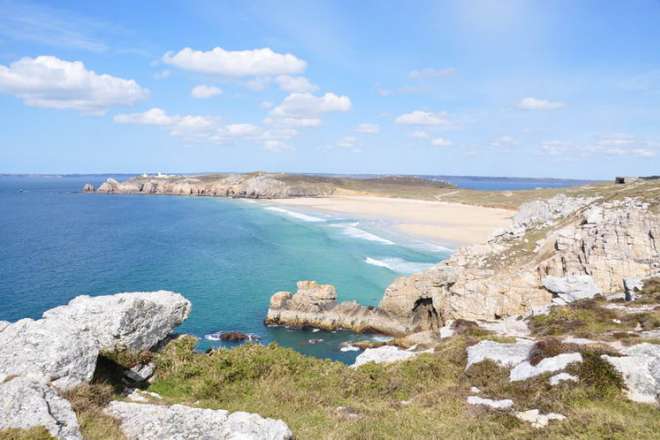
The Crozon peninsula is situated in Finistère (breton: Pen-ar-Bed ..."end of the world"), the westernmost region of Brittany, lying between the Rade de Brest and the Bay of Douarnenez. One could refer to the peninsula as "Brittany en miniature", as so much of the beautiful and typical that defines "Brittany" can be encountered here in this one relatively small area: the steep cliff dominated coastline with its powerful surf and breathtaking views, sandy bays embedded between rocky headlands, heath landscapes and charming little villages and hamlets where time seems to have stood still.
The Crozon peninsula belongs to the "Parc Naturel Regional d'Amorique", the only natural park in the region.
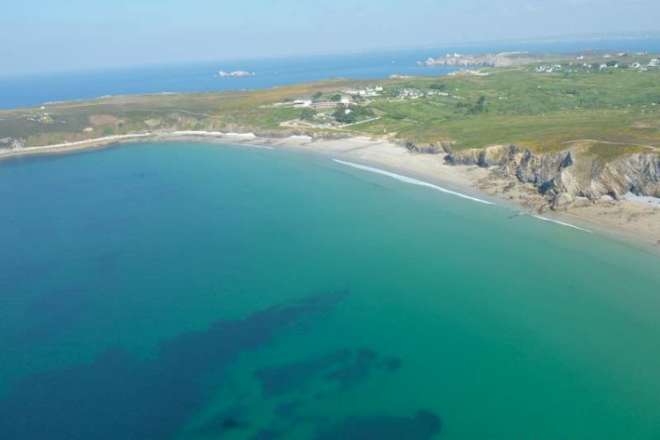
Towering in every direction, the massive rocky outcrops of Point des Espagnols, Point de Pen-Hir, Point de Dinan and the Cap de la Chèvre offer breathtaking panoramic views of the dramatic coastal landscapes. At Point de Dinan the erosion of thousands of years of wind and waves has shaped a majestic arch in the rock. Impressions of magnificent rock formations alternate with those of the dazzling natural colours playfully reflected by the water. Point de Dinan provides a wonderful view of two of the other headlands on the peninsula: Pointe de Penhir and Cap de la Chèvre as well as Cap Sizun and Pointe du Van. Cap de La Chèvre is the southern promontory of the peninsula. It offers wonderful views of the Bay of Douarnenez onto Cap Sizun.
Large areas of heath land with broom and honeysuckle extend an invitation to walk the coastal path alongside the spectacular cliffs
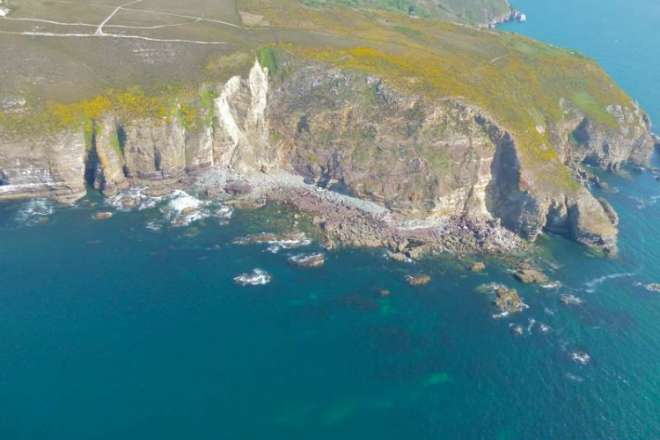
Dry-stone walls, inhabited by lizards and suchlike, secure loose rock and rubble along the way. The varying water depths, the sand and rock create a natural spectacle of intense colour. The closeness of the golf stream allows a near Mediterranean fauna to exist in some of the more protected bays and coves. At the foot of the cape promontory is the seaside town of Morgat with its grottos, and the main town of Crozon.
The coastal area around Morgat is famous for its rock formations and grottos. The grottos are categorised into "small and "large". The first lie to the north of the beach bordering Portzic. They can be accessed comfortably on foot, albeit only at low tide. The large grottos are even more impressive, they lie south beyond the pine forested headland Beg ar Gador, which reaches out to sea and separates the beach to the south. A visit to the large grottos is only possible by boat. Daily sightseeing boat tours are operated from the port to view the grottos, the best of which is regarded to be La Grotte de L'Autel (the Altar Grotto).
The Côte Armor
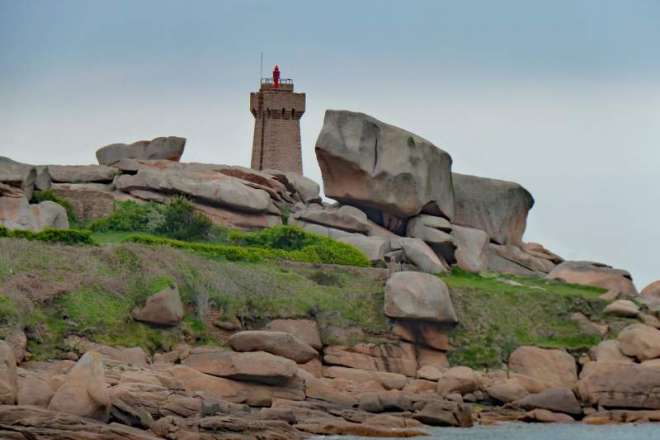
The pink granite coast is located in the department of Côtes d'Armor in northern Brittany, between Paimpol and Trébeurden and is a geological wonder. The name Granit rose is due to the shimmering shimmering pink granite boulders that jut out from the heath along the coast.
Such pink granite, which consists of a mixture of quartz, mica and feldspar, exists only in 3 coastal regions of the world, Brittany, Corsica and China. If you want to visit the area, it is best to start the tour from east to west by the rocks of Ploumanac'h in Perros Guirec, a well-known seaside resort with 2 marinas and 3 beautiful beaches. The sights not to be missed: Chapel of Notre-Dame de la Clarté and the museum. From here the coastal trail GR34 leads; from where you can explore the fabulous coastline with its spectacular rocks by the sea.
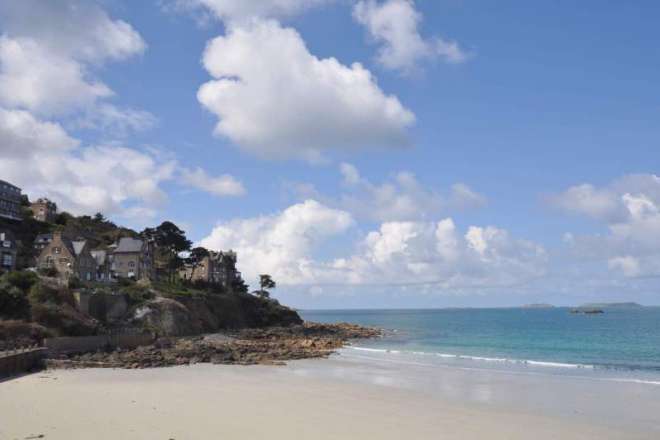
From here the coastal trail GR34 leads; from where you can explore the fabulous coastline with its spectacular rocks by the sea. From here, where the lighthouse is located, you can see the Castle Costaérès and the Archipelago of the Seven Islands - les sept-iles (Rouzic, Malban, Les Costans, Bono, Aux Moines, Plate and Les Cerfs). This is a unique nature reserve with the largest seabird colony in France. There are also gray seals here.
Impressive is also the oratory in Saint-Guirec. The tour then continues to Trégastel, a small coastal town with several religious buildings, megalithic tombs and menhirs and a tidal mill, which was built in 1764. Trégastel is also known for the marine aquarium and the water sports ports. A paradise for those who want to surf, catamaran or kayak, learn stand up paddle or swim in crystal clear water.
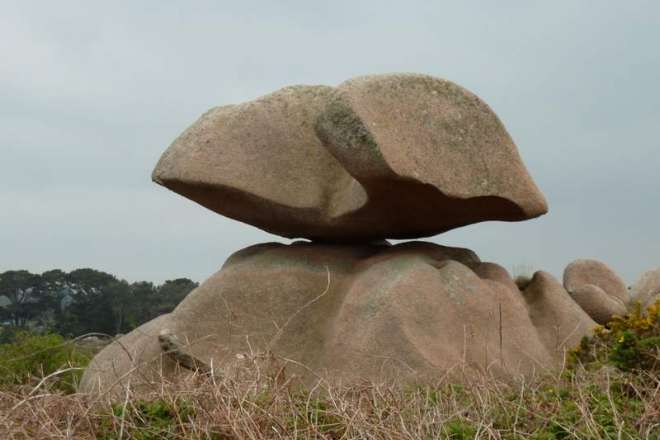
Another resort is Trébeurden, where there are springs and beautiful landscapes where even some Camargue horses live. Trébeurden is surrounded by numerous natural beauties such as the top of the Bihit with a fabulous view over the coast and the bay of Lannion.
A trip is also worth the charming town of Lannion, which is located on the River Léguer, with beautiful cobbled old streets and old timber and slate half-timbered houses and the "Quartier de Brelevenez" with nice pubs and a beautiful church. Here you can reach over 132 steps and have a wonderful view.
Every Thursday in Lannion there is a large market that attracts many local people and is one of the most beautiful colorful markets in Brittany.
Penmarc'h
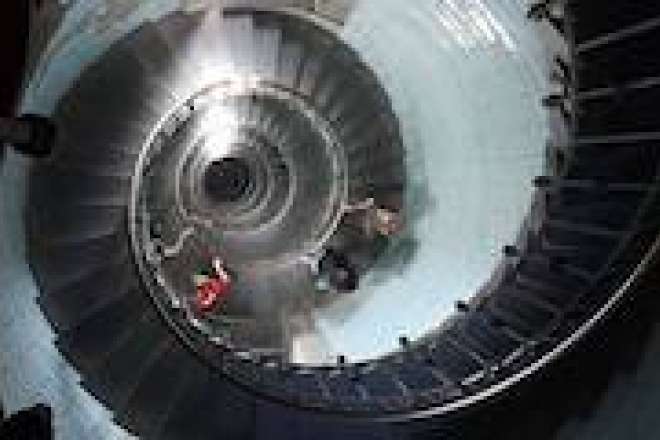
The municipality of Penmarc'h, located in the Bay of Audierne in southern Brittany, consists of several villages, Penmarc'h, the main town of the municipality, Saint-Guénolé, Kérity, Saint-Pierre and the port of Saint-Guénolé, he is the fifth largest fishing port of France and after Concarneau and Lorient the third largest sardine port.
Especially beautiful, the Phare d'Eckmühl, built in 1857 from gray granite, is one of the few lighthouses in Brittany open to visitors, impressive staircase with 307 steps and an inner wall covered with opaline glass. Once you have made it, you will be able to admire the magnificent view of the Atlantic Ocean. In the lower area, you can learn all about the lighthouses around Penmarch and the entire Finistere from images and audiovisual media.
The small old chapel Notre Dame de la Joie from the 15th century is located at the foot of the lighthouse right on the sea.
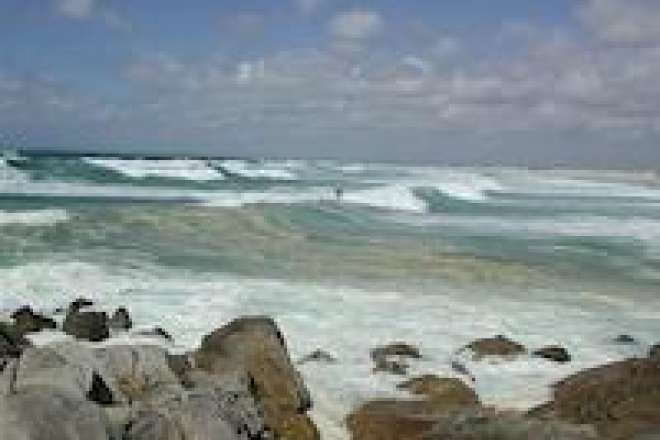
The Pointe de la Torche, a stunning little peninsula on the extreme west of Brittany and well-known surfing spot, Worldchampionship area, a paradise for surfers and surfers and a meeting place for the Funbord Festival.
The breathtakingly beautiful fine sandy kilometer long sandy beach behind the dunes invites you not only to surf but also to long beach walks. Since it is always relatively windy here, families come here with their children for hang gliding. For the big hunger after, there is a creperie at the parking lot in front of the beach.
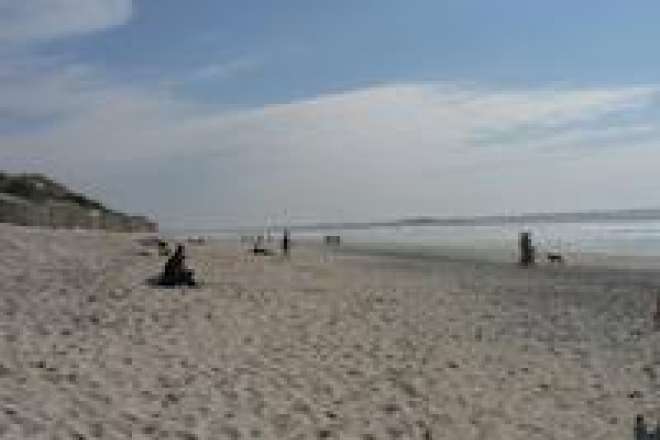
At Penmarch is also the sandy beach Plage de Pors Carn, 2 km long and fine sand, popular with surfers and sunbathers, a beautiful family beach, which is also monitored. There is a kids club and a first aid station
Musée de la Prehistoire
Anyone interested in the archeology of Brittany must visit the Musee de la Prehistoire. Here are more than 3000 archaeological finds that reveal the history of Finistere, axes, daggers, lances and much more. In the outdoor area you will find menhirs, dolmens, grave vaults and funerary shrines.
The Department of Morbihan
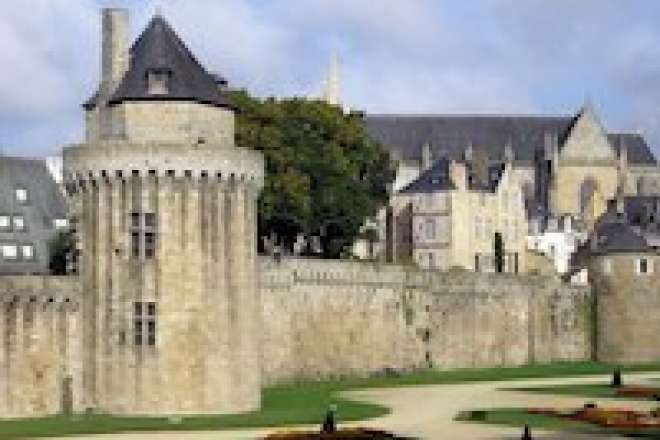
Mor-Bihan is the Breton word for "little sea". This is the name of the department of the Gulf of Morbihan, which is the symbol of southern Brittany and one of the most beautiful bays in the world, an inland sea, in a very protected location, dotted with many small islands, of which about 30 are inhabited.
The Ile aux Moines is the largest and most forested of the islands, it is also called the "Pearl of the Gulf", it has a very beautiful atmosphere through the beautiful fishermen's houses and the magnificent flowers of mimosa and camellias. It owes its name to the monks of the abbey of Redon, who made it the gift of the King of Brittany in the 9th century.
There is a ferry service every 30 minutes from the mainland to the island of Quai Port-Blanc in Baden.
Also worth seeing and ideal for a day trip is the Ile d'Arz with its blue trail on the west coast. Here you have a beautiful view of the islands
In the Gulf of Morbihan, sea and land are united on nearly 12,000 hectares. Especially with sailors, the area is very popular. Even hikers love this area between Arzon and Locmariaquer with their 180 km long coastal hiking trails, which offer beautiful viewpoints with stunning views of the Atlantic Ocean. The climate is mild to mediterranean.
The most famous sights in Morbihan:
Ria Etel, a gulf fed by several streams, is an inland sea located between Lorient and Vannes. Here lies the small idyllic island of Saint-Cado, one of the most beautiful sights in the region.
The landscape has many variants, from dunes, small beautiful bays, beaches to moorland there is everything here.
Oyster farming is also famous, you should absolutely try the famous Etel river oyster.
The fauna of the Ria is very diverse, here live cormorants, herons, terns, sandpipers and much more.
The village of Etel was once the most important tuna port, there is still a tuna festival held every summer, accompanied by bagpipe music.
Carnac with its famous megalithic fields, the fine sandy white beaches lined by pine forests, the salt pans. 3,000 menhirs can be seen here for about 1 km in length. The most impressive are those of Kermario, Kerlescan and Le Menec. Not far is a huge menhir with a stately height of 6.50 meters, the Manio and the burial mound of Saint Michel.
It is estimated that the menhirs were built in the years 5000 to 3000 BC.
Saint Goustan, a pretty little harbor town with its 13th-century stone bridge, cobbled little streets, beautiful half-timbered houses, art galleries and craft shops.
A walk along the river Auray is definitely worth it, the sight of the castles and manoire in the high forest and the beautiful little bays are breathtaking.
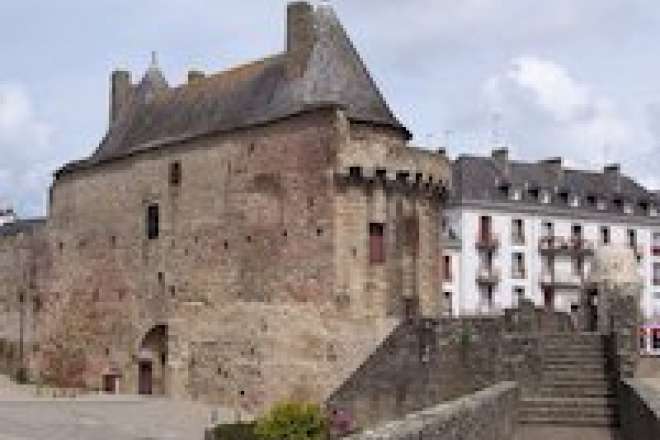
Rochefort-en-Terre, one of the most beautiful historic towns in Brittany, built on a rock between forest and heathland. It feels like in a former world here between fortress walls, the old mansions and the castle.
Hennebont, also a medieval town that has retained its charm. Particularly beautiful is the framed by 2 towers city gate, the basilica Notre-Dame-du-Paradis, the outside in a former Cistercian monastery located riding stables with the saddlery.
Ile de Groix, a beautiful island, only 4 nautical miles from Lorient, 8 km long and 4 km wide. Picturesque harbors, beautiful wild nature, megaliths, a paradise for geologists, there are over 60 mineral species here.
In the past, Croix was the leading tuna port in France.
Famous here is Pen-Men, a headland with a rectangular lighthouse, the "Trou de l'E", the Hellmouth, where the sea seethes, the small beautiful port of Locmaria with its small streets and pretty houses, the point of the chat the garnet colored beach Sables Rouges is located ..
The Ile de Croix can be reached by ferry from Lorient all year round.
The peninsula of Quiberon, a dream for active vacationers (sailing, diving, kite surfing, surfing, beach sailing, kayaking, hiking) 30 km of coastal kilometers, which are very different; The wild coast from Chateau Turpault to Pointe Percho, 8 km away, is spectacular with its rugged cliffs. From the point Beg-ar-Goalennec the view over the sea and the Belle-Ile is breathtakingly beautiful. The Presqu'ile Quiberon is also known for its white beaches, the beautiful colors of the sea and the rocks as well as the many megalithic sites.
Gourmets will also get their money's worth, there is a wide selection of seafood, creperies, smoked fish and also the delicious caramel cream with salted butter, called calidou.
The peninsula Rhuys is located in the southern Gulf. It is about 10 km long and only 2 km wide. The most beautiful coastline is in the very south, where there are beautiful sandy beaches. Rugged and winding, however, is the north coast. In the east there are the famous oyster parks, which were built in checkerboard pattern down to the river Pénerf.
Beautiful also the castle Suscinio, framed by moor and forest with a great sea view on the bay of Landrezac. It was one of the favorite castles of Anne de Bretagne and the Breton dukes.
Port Navalo is a visit worth, here you have wonderful Aussicheten and can observe the flow between the ocean and the Gulf. Continue to Pen-Castel with its famous and most beautiful tidal mill of Brittany, to Le Logeo with its pretty harbor and the abbey church of St. Gilda up to the castle of Kerlevenan with its beautiful Paradise Gardens.
Worth seeing are the islands of Houat and Hoëdic, The 5 km long Houat can be reached via the port of Saint-Gildas, where it is lively. As soon as you leave the houses you can discover the Inel in almost untouched nature. There are only sandy roads, no roads and walls. Well-known is the beach Treac'h he Goured on the east coast and the Pointe Tal he Hah.
The company "Compagnie de l'Océan" drives the two islands from Quiberon all year round.
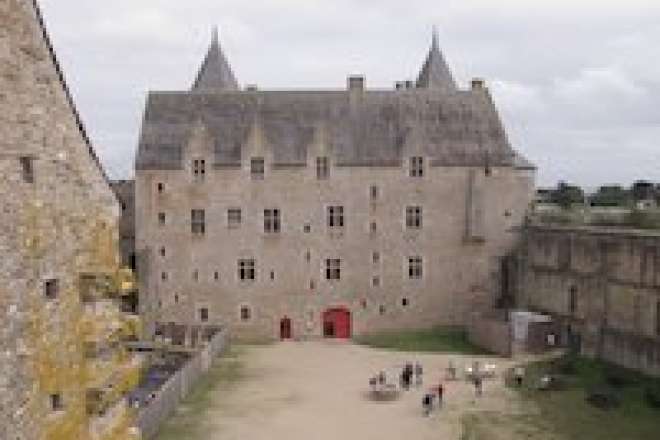
The Belle Ile, who rightly bears her name. Here you will find spectacular cliffs, beautiful beaches (such as the Plage de Bordadoué and Les Grands-Sables) and picturesque harbors. It is best to rent a bicycle on arrival in the port of Palais, so that you can explore the most beautiful corners of the island. Gorgeous the harbor and the old town of Palais and the Vauban Citadel.
In the northwest is Sauzon, a picturesque harbor with nice restaurants and cafes. From here to Pointe's Pointe, it is not far, a wild cap, which became known at the end of the 19th century by the actress Sarah Bernhardt, who lived here partially.Your property can be visited today.
The Belle Ile can also be reached from Quiberon all year round.
Port Louis, the citadel city in the Rade of Lorient. The citadel and the walls that lie behind the guns seem to have been spared from the time, they are the landmark of the picturesque port. The first parts were built in 1590 by the Spaniards, and King Louis XIII completed the fortress in 1637, after which the city was named. It now lives on tourism and fishing. In the citadel there is a museum where you can admire boat models that trace the African and Oriental sea routes of the 17th and 18th centuries.
An absolute must is a visit to the eclectic medieval town of Vannes on the northern shore of the gulf, known as the "City of Art and History". It is the capital of Morbihan; beautiful old half-timbered houses and elegant villas dominate the image of the city, which is protected by its city walls. Hundreds of sailboats can be seen in the port of Vannes.
Also worth seeing are the Marine Aquarium (Aquarium océanographique), the Butterfly Garden (Jardin des papillons), the Garenne Promenade, which runs along the city walls built in the 13th century. Gates and towers are strung together above the beautiful French gardens.
Ile Gravinis, reachable from the mainland by speedboat, is famous for its tomb, which is 8 meters high and is a very special structure. The walls of the burial chamber consist of 29 piers covered with enigmatic engravings
Lorient, the city of the five ports, was founded in the 17th century. The wharves and manor houses tell the story of the conquest of India, the 2nd World War, the deep-sea fishing, the boom of the high seas regattas .. Lorient was considerably destroyed in World War II, but there are still beautiful Art Nouveau buildings from the 30's.
Major nearby beaches: Guidel, popular with surfers, Larmor-Plage.
In Lorient there are numerous festivities around the yacht and passenger port, small concerts and fest-nos. The best known is the Interceltique festival, which attracts a great many people from Celtic nations.

